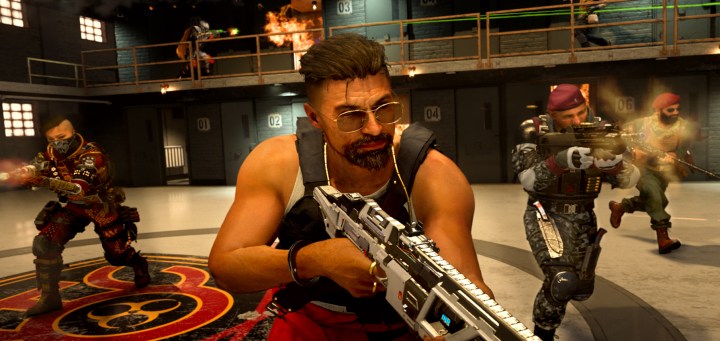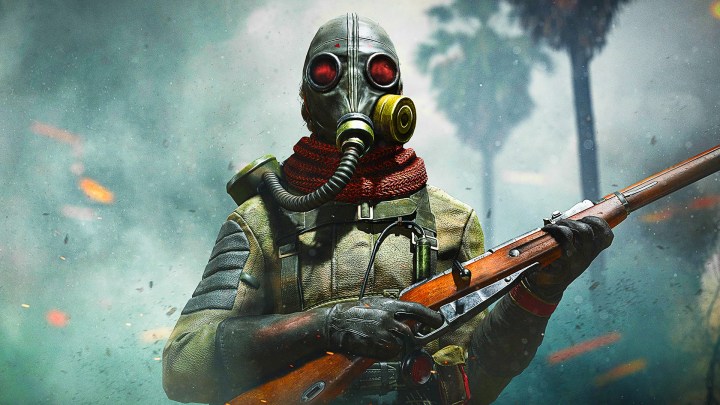Since its launch, Call of Duty: Warzone amassed a gargantuan player base of over 125 million, making it one of the most successful battle royale games of all time. But based on the game’s initial state, you might not have expected it to reach such heights. It was a barebones experience in March 2020 that certainly got worse before it got better (looking at you, DMR meta of 2021). Slowly, Warzone started to come together, as its developers, Raven Software, and other Activision support studios made improvements over the years.
How did the game go from being a broken mess to the multiplayer institution it is today? While there are a number of contributing factors, the most noteworthy is the community, which shaped the game’s trajectory over the past two and a half years. Ahead of Warzone 2.0’s launch, I spoke with prominent members of the Warzone community including YouTubers TrueGameData, JGOD, and WhosImmortal about how content creators helped build the battle royale game into what it is today.
Carrying Warzone to victory
A major issue at the start of Warzone’s life cycle was the lack of transparency from the developer’s side. It’s one thing to have issues — every game has them — but it’s something much worse to leave your players in the dark. And for the first several months of Warzone, players had no idea when and if the game’s biggest problems would be fixed.
“Initially, Warzone wasn’t ready to be as big of a Battle Royale as it ended up being [due] to world circumstances,” Zac, AKA WhosImmortal (who wishes to keep his last name private) tells Digital Trends. “So for those first few seasons, I think a lot of the dev team might have been in over their heads.”

Warzone was full of complexities at launch, but didn’t do a great job of conveying how many of its features work — leaving the community to rely on YouTubers and content creators to explain the intricacies. It was a job that would require a substantial amount of work, but dedicated fans were up to the task. For the first nine months or so of Warzone, patch notes were either completely barebones, missing, or downright wrong. That’s where YouTubers like TrueGameData, JGOD, and TheXclusiveAce saved the day, manually testing dozens of weapons, and hundreds of weapon modifications (known as attachments) to share the “real” patch notes with the community.
For example, in January 2021, JGOD made a video discussing a particular blueprint (that you had to buy using real money) that unintentionally boosted the weapon’s base damage by a noticeable amount. This was an error, and if not for this video — and similar videos from other creators — it’s unclear when and even if this would have gotten fixed.
Patch notes went from providing information such as “this weapon does more damage,” to offering more specific details, like “Gorenko Anti-Tank Rifle bullet velocity decreased to 900, down from 980.” Having specific numbers to quantify just how a weapon has changed was a substantial improvement.
“It took a bit for the devs to find their footing,” WhosImmortal continues. “But by the final few seasons of the Modern Warfare 2019 era, things seemed to take a large turn for the better with the community’s feedback from the prior months and seasons about missing patch notes, and the broken or lackluster systems.”
Another major flaw that still remains to this day is the lack of proper in-game weapon stats. Without following YouTubers like James Godoy, who goes by JGOD, a casual player is certainly at a disadvantage, as they likely wouldn’t know how to effectively customize a weapon with attachments. Sure, the game offers a general metric — a bar that tells you what stat is impacted by an attachment — but it doesn’t effectively quantify the information, and oftentimes this data is either wrong or misleading.
Anthony Zachman, AKA TrueGameData, has a site dedicated to weapon stats, allowing players to compare firearms to see which is best. Throughout Warzone’s lifecycle, this site was updated frequently to stay up-to-date, as Zachman manually tested nearly every aspect of the game by hand. TheXclusiveAce also covers similar topics on their YouTube channel, but tests more nuanced features such as footstep audio and how aim assist works, for instance.
Taking community feedback to heart
Aside from providing details about the game itself, some content creators have fostered positive communities that have, in turn, offered feedback to the Warzone developers in a constructive way. Though that criticism would have meant nothing if Activision and Raven Software weren’t receptive to it.
January 2021 was a terrible time for Warzone due to the popularization of the DMR tactical rifle, which had the ability to down players from afar in just a few shots, with almost no recoil. Shortly thereafter in the spring of 2021, Raven Software began taking updates much more seriously, publishing far more detailed patch notes. You can see a clear difference between the Season 3 2021 patch notes versus the Season 2 2021 patch notes. The developer not only added meaningful improvements, but also detailed exactly what it changed, giving the community specific data to work with.
Once Activision embraced community feedback, it began implementing suggestions in strides. Some of them took longer than others (such as the interrupting gas mask animations), but a huge portion of initial complaints were eventually addressed.

Though, Warzone certainly had its fair share of ups and downs before reaching its best state. One of the worst periods was during the Vanguard integration, which folded in all the weapons and the new Caldera map based on the 2021 WWII game. The Cold War integration in 2020 was a complete disaster, so the community braced itself for an influx of issues ahead of Vanguard’s addition to Warzone.
“I think the mishandled Vanguard integration forced [Activision] to be more responsive to make up for it,” Godoy tells Digital Trends. “And that carried over to Warzone 2.0 with the release coming almost a month earlier than every integration date previously.”
When the Vanguard integration happened in December 2021, it nearly broke the game. Console players, specifically, couldn’t even get building textures to load in, which caused a tremendous amount of problems. But slowly, things began to improve.
Zachman attributes the major improvements to Senior Creative Director at Raven Software Ted Timmins. “Timmins came in and listened to the community on the overall game development side,” Zachman says. “They refocused on quality of life updates that the community had been begging for since Warzone launched, including pushing for accurate patch notes, I think.”
Likewise, Zachman gives credit to Tully Ackland, Senior Game Designer at Raven Software. “Ackland was the same as Ted was for the overall game direction, except for weapon balance. He listened to community feedback and took weapon balance in a very positive direction.”
This was a monumental change for Warzone, as the game’s meta was previously restricted to just a handful of weapons, making the overall experience feel stale — despite having dozens and dozens of firearms available. Zachman says it was invaluable for the “community to finally have people at the company who were vocal, listening, and communicating with us.”
WhosImmortal says Activision and its studios continued to listen to the community, well through the Vanguard era, as well. “I think really the driving forces were the developers finally getting the game itself under control (for the most part), while the community repeatedly pitched in, sort of in a non-official dev way.”
Shaping the future
Content creators actually had a direct impact on Warzone’s changes, thanks to Creator Briefings. These were behind-closed-doors discussions between Warzone developers and content creators, with an open dialogue to voice concerns and criticisms. The mere implementation of such dialogues was such a major step forward, and one that other live-service games could benefit from going forward.
“Arguably one of the biggest factors in the game’s evolution was the various Creator Briefings Activision held with a handful of Warzone creators and streamers, myself included,” WhosImmortal tells Digital Trends. “These meetings allowed us to relay our own feedback, as well as our communities, to promote a more positive method of communication between the player base and development teams.”
With Warzone ending seemingly on a high note, the door is left open for more improvements and iteration with Warzone 2.0. Activision no doubt has plenty of data to use with the new game, and, assuming Infinity Ward takes constructive criticism the way Raven did, the sequel could be leaps and bounds better than its predecessor.
Godoy remains optimistic for the future of Warzone. “I really hope Activision continues to be as responsive as they have been in the past 10 months or so, because it actually feels like they have a relationship with the community.”



